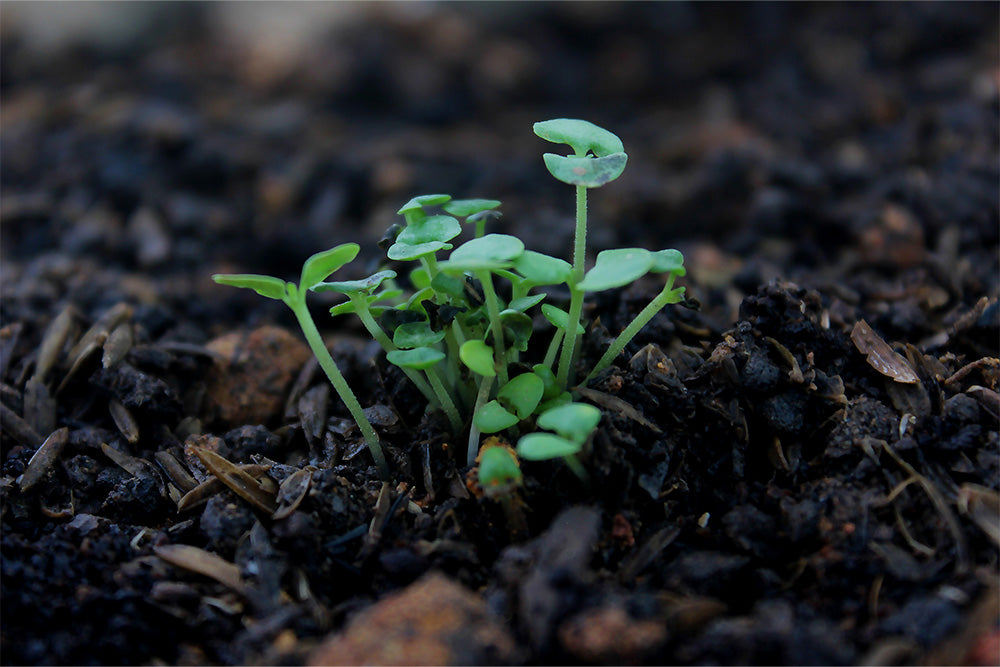Agriculture claims 50% of all habitable land and is responsible for just under 25% of all human-created carbon emissions. Which means it plays a key role in helping us create a safe and healthy future, one where we can sustain our global community by working with nature, not against it.
We know and love organic farming systems and we’ve sung our fair share of praise about all of their benefits. Although recently regenerative farming has made its way into the conversation about the future of sustainable farming and it makes great promises of a healthier planet and a better tomorrow. But what does it really mean? And is it better than organic farming?
So what is regenerative farming?
When we first heard about regenerative farming (also known as regen ag, for short), we were equal parts curious and confused. So we spoke to an industry expert to find out what it’s all about.
“Regenerative farming is this incredibly positive idea that farming can stop being the cause of many environmental problems and become the solution to them instead. It is a way to develop farming systems that are actively building ecosystems, regenerating soil and shaping the kind of environment for everyone to thrive in.” - Luke Dale-Harris (co-founder of Farm Wilder)

(above) Luke Dale-Harris conducting a soil inspection with one of our organic wool farmers.
Is regenerative farming better than organic farming?
For the most part, Regen ag borrows a lot of its techniques from Organic Farming, including renouncing the use of any chemical fertilisers & pesticides and adopting high standards of animal welfare. So it’s not about one being better than the other, but more about two systems with different priorities and a fundamentally common goal : a sustainable future for farming.

Although, regenerative systems go a step further on the premise that ‘sustainable’ farming is not good enough and we must actively work to regenerate the natural systems that we have destroyed over time, by giving back more than we take out. More specifically, they distinguish themselves by focusing on the importance of restoring endangered biodiversity and improving soil health to create healthy and self-sustaining ecosystems.
How does a regenerative farm work?
According to the Rodale Institute, it is a method of farming that “improves the resources it uses, rather than destroying or depleting them.” Quite literally, the idea is to leave the land better than you found it! Regen ag is designed to work in harmony with nature, by mimicking natural processes through carefully planned land-management. Since every farm and soil type is different there is no one size fits all approach, but here are a few general principles that are typical of regenerative systems:
- Low or no tilling: Ploughing and aggressive tilling erodes the topsoil, releasing large amounts of trapped carbon and resulting in degraded soil quality. Minimising physical disturbance of the soil leads to increased amounts of soil organic matter, creating a healthy environment for several micro-species to thrive, over and under the ground.

-
Crop Rotation: Different crops require different nutrients, so by rotating the crops grown on a patch of land, you can effectively avoid the build-up of certain nutrients and the lack of others. Crop and plant diversity help create rich and nutrient-dense soil, leading to higher yields and better quality food.
- Livestock Rotation: Regenerative farms practise rotational grazing of livestock, allowing pastures and grasslands a ‘resting period’. This prevents overgrazing and also provides the conditions needed for a biodiversity of wild plants and species to return. While grazing, the livestock also gently trample the grass, feeding it back into the ground and increasing soil organic matter, ultimately creating healthy soils full of nutrients.

Why isn’t everyone switching to Regenerative systems?
Regen ag has more advantages than we can count and mutually benefits the plants, animals, farmers and all of us. It helps build resilient and financially-sustainable farms with healthy soils, that restore endangered species and produce better quality food. It seems like it’s a win for everyone, so what’s the catch?
We did some research and discovered that even though the concept appeals to many farmers, most of them do not have the knowledge or the resources to make the transition. Regenerative farming is relatively new and, at the moment, does not come with set guidelines and is not regulated by a control body. This makes it challenging for farmers to adopt and practise regenerative farming principles. So we decided to do something about it.
Naturalmat’s Regenerative Farming Programme
Earlier this year we teamed up with Farm Wilder, a regenerative farming consultancy, and fully funded three Regenerative Farming Programmes for our local and organic wool farmers. This includes a personalised consultancy service for every farm to produce a custom regenerative farming plan that fits every individual farmer’s specific needs, goals and capacities.
The programme will also identify metrics to be monitored over time and guide the farmers through the complex transition processes. This framework will ensure the farmers get the support they need to help build environmentally and financially sustainable farms, which is more important than ever in these difficult times.
